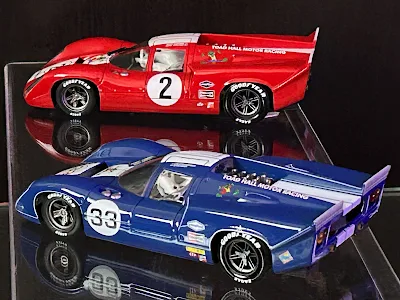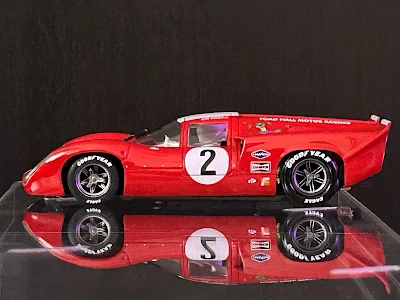
Recently, Avant Slot announced their upcoming release of the first-generation Renault 5 rally car and transporter combo. If the Renault 5 body had been injection-molded ABS, I would’ve picked it up in a heartbeat—ready to run it hard without worrying about damage. That’s exactly what I was hoping for.
But from what I’ve gathered, the body is likely to be resin instead. That took the edge off my excitement.
Speaking of resin cars, I actually have two Le Mans Miniatures resin models in my collection. One is a Sainz Collection model—an exclusive product for Hobby Classic.
But from what I’ve gathered, the body is likely to be resin instead. That took the edge off my excitement.
Speaking of resin cars, I actually have two Le Mans Miniatures resin models in my collection. One is a Sainz Collection model—an exclusive product for Hobby Classic.
Not long ago, while thinking about my vast collection of “cold” cars—the ones I simply enjoy looking at—I had mentally filed these two firmly in that category: cars that I’m perfectly content just owning.
But after seeing Avant Slot’s announcement, it struck me that I actually wanted to run an R5. Deep down, I wanted to feel it in motion.
So I decided to warm up those two LMM cars and run them on the track.
So I decided to warm up those two LMM cars and run them on the track.
I left the fragile mirror stalks as they were—clearly the kind that would snap clean off with even a single rollover. I’d run the cars as-is and, if they broke, I’d fix them then. With a bit of reinforcement using metal pins, I could repair them to be far stronger than the originals—virtually unbreakable.
But I don’t believe in preemptively snapping parts just to make them tougher. When something breaks, it shows where the actual stress point was, and that’s the most efficient place to reinforce. Just guessing where something might break based on appearance in a static state feels like pointless destruction to me.
But I don’t believe in preemptively snapping parts just to make them tougher. When something breaks, it shows where the actual stress point was, and that’s the most efficient place to reinforce. Just guessing where something might break based on appearance in a static state feels like pointless destruction to me.
I brought these two beautiful cars to my usual friend’s NINCO track and gave them a go.
That’s when I found out the LMM guide blades were sitting too deep for NINCO rails. They couldn’t complete a single clean lap. They didn’t come off the track, but no matter how many laps I ran, they kept snagging and stuttering, so I couldn’t find any enjoyment in it.
Sure, I wasn’t expecting them to perform like race-tuned machines—but still, the frustration was real. Next time I visit, I’ll shave down the blades and make sure they run like they should.























